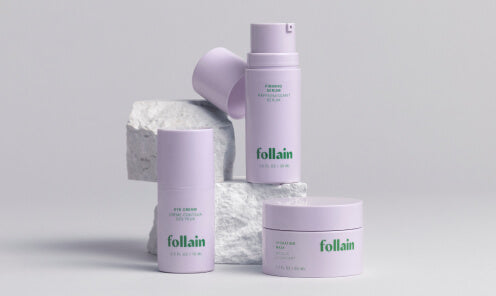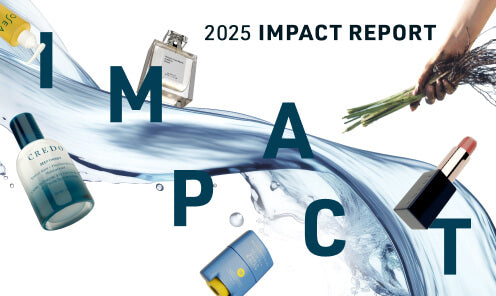Preservatives: The ingredients people love to hate (but would actually hate *not* to have...) - By Mia Davis
I’ve been in the clean beauty space for a decade, and it is safe to say that the ingredient type that has been most misunderstood, most contentious (disdained, even) is the functional class known as preservatives.
My theory is that Fear of Preservatives (let’s call it FOP) is the result of a couple of overlapping things, chiefly the emergence of data on the type of preservatives called “parabens,” plus an increased focus on healthy eating (including preservative-free foods).
Background on parabens
Years ago, scientists found that some types of parabens act like weak estrogen in the body, and in turn may affect breast cells and potentially increase the risk of breast cancer. Parabens are estrogenic at very low levels, and may be especially problematic in real life scenarios where there are other cell growth agents in the body. And- parabens have been found in breast cancer tumors, which isn’t to say that they caused the cancer-- but all of these studies rightfully raised red flag around these types of preservatives.
From about 2007 through to present day, public health advocates and in-the-know consumers have been demanding that companies- especially those in the “natural cosmetics” space-- get rid of parabens. And a great many of them have, which is good (and of course, Credo has had parabens on the Dirty List from day one).
The rapid growth of food shows and blogs, Whole Foods Markets, online natural foods services, and farm-to-table eating also got some people thinking: “since preservatives are bad news in food, maybe they are in skin care and other packaged products.”
There are other factors contributing to the rise of FOP--the multitude of ingredient rating applications promote the hazard of ingredients, the increasing number of people sensitive to a variety of ingredients in consumer goods, including preservatives (some of which can cause skin irritation for some people).
All valid thoughts. And for the record: Asking hard questions about the safety/sustainability of ingredients and materials is my M.O. I encourage people to do this every single day.
But asking Qs about preservation doesn't happen that much--there is more of a straight-up “FOP.” A real conversation would reveal that products which contain water *have* to be preserved or they will grow yeast, bacteria and/or mold. That’s not something that consumers or brands want-- opening a skincare product to find fuzz or stink… yuck. And, though the FDA doesn’t have much control over the skin care industry, they do state that products cannot be “adulterated,” which includes microbial growth. So preservatives are required (unless the products has a very short shelf life and/or requires refrigeration, which is rare).
A couple of things to note here:
- Preservatives are meant to kill, so their hazard (ability to cause a living thing harm) will be higher than, for example, most plant oils or a large, inert polymer (and therefore score higher in Skin Deep).
- The pH of the product, if it is leave-on or rinse-off, the other ingredients used in it, the expected shelf life for the product-- all of these things are factors in choosing the “right” preservative.
- “FOP” has led to some companies telling consumers that they’re “preservative free” when that’s not entirely true. When companies buy bulk ingredients from ingredient suppliers, they are often getting an already-preserved raw ingredient (e.g. aloe vera gel with added phenoxyethanol, or grapefruit seed extract with added methlyparaben). But the end product does not have to list the preservative that is tagging along with these raw ingredients, so even those products that imply they are preservative-free may not be. And, companies may use ingredients meant to help with preservation, but since they’re not technically known as “preservatives,” companies say they’re preservative free (e.g. some essential oils, like rosemary). While this practice might not be a safety issue, it certainly is not transparent, and it throws other brands under the bus that are being honest about using preservatives. While this practice might not be a safety issue, it certainly is not transparent, and it throws other brands under the bus that are being honest about using preservatives.
We need to take a smarter approach to selecting preservatives, and we need to ask chemical makers and suppliers to actually assess the chemicals for their impact to harm human and environmental health. Most of the preservatives on the market have a lot of data gaps, meaning that we just don’t know that much about them. It is difficult to confidently choose a “safer” preservative (compared to parabens, for example) if there is no data on endocrine disruption, neurotoxicity or ecotoxicity. (Environmental Defense Fund released a great report on this subject. Check it out.)
Credo has begun to facilitate conversations with our 110+ brands and other stakeholders (green chemists, ingredient suppliers) to spur innovation and show the market demand clean preservatives. Our voice amplifies the recent work of the GC3 Preservative Competition, which carved a path for more preservative innovation in our industry.
This innovation will take some time. In the meantime, let’s not let “FOP” muddy the waters. The best things we can do:
- Skin care and cosmetic companies need to ask their suppliers to generate data on the safety and sustainability of their chemicals
- Formulators should do their best to select preservatives, antioxidants and packaging that will prevent microbial growth, at lowest quantities that will still be effective
- Consumers, advocates and bloggers can refrain from “FOP” when it come to consumer goods, and instead ask for commitments to ingredient safety and transparency
Be well,
Mia
If you have questions, please email [email protected]. We'd love to hear from you.










